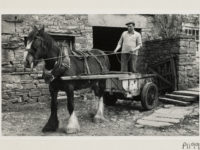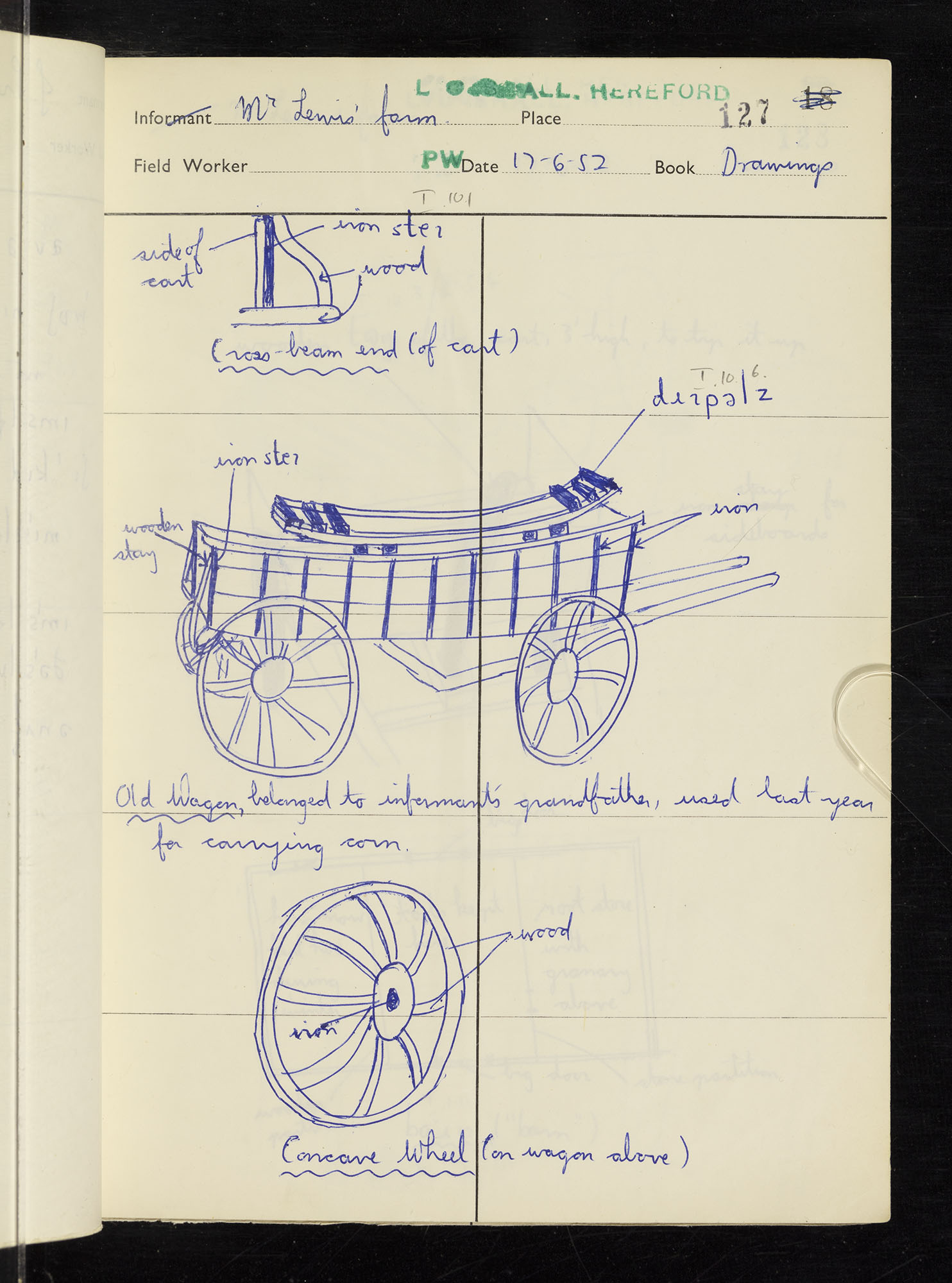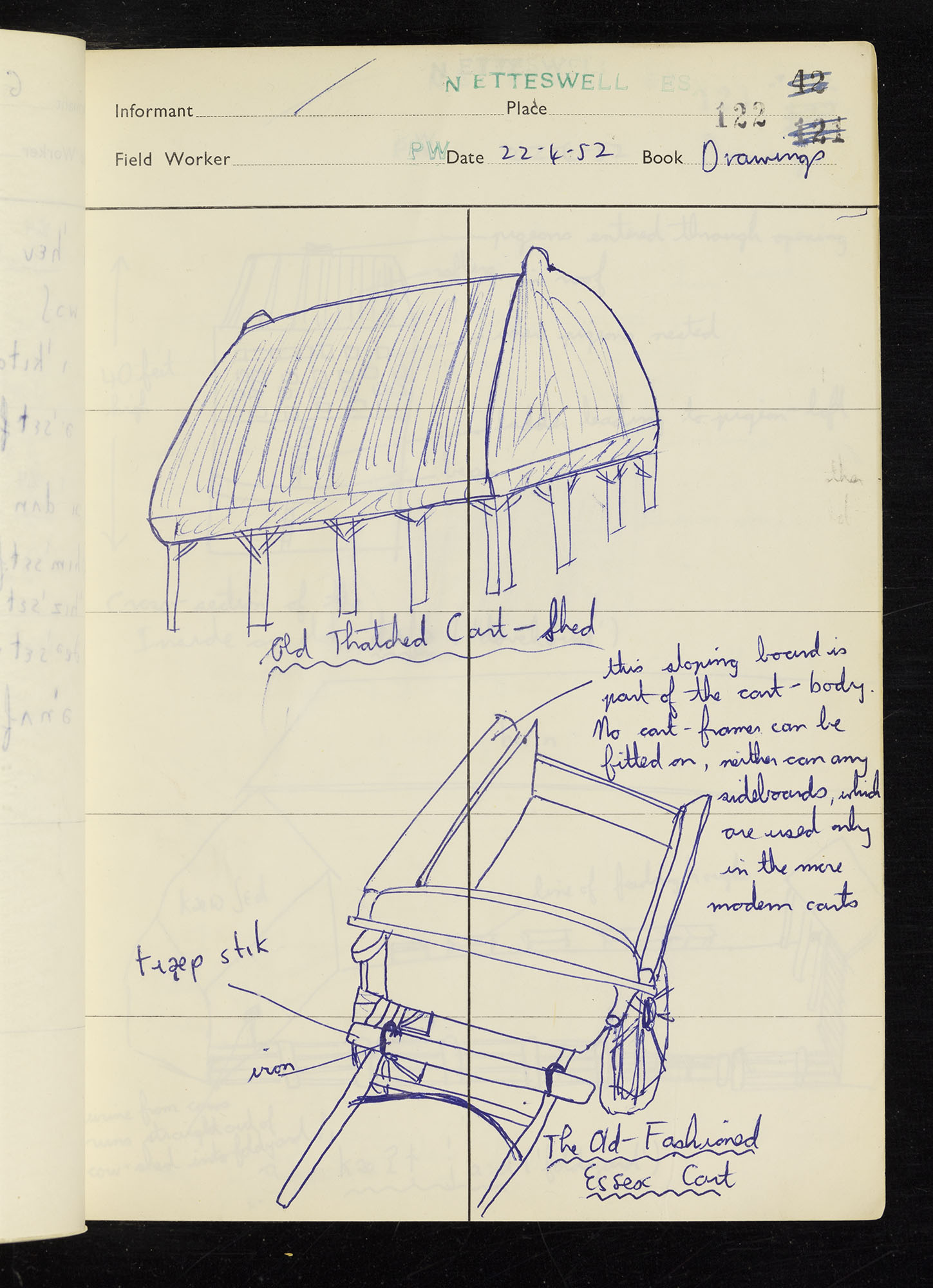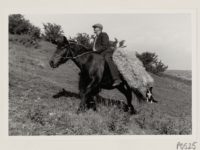The fieldworkers took a keen interest in the horse-drawn vehicles that were still being used in the rural locations they visited. They took photos and produced illustrations to record what these contraptions looked like and how they worked.
The fieldworkers were keen for the important role the horses played to be remembered once they were replaced by more modern, motorised alternatives. Some informants talked of the railways, but carts and the use of horses and donkeys were the main focus of the fieldworkers’ questions, drawings and photographs.











